

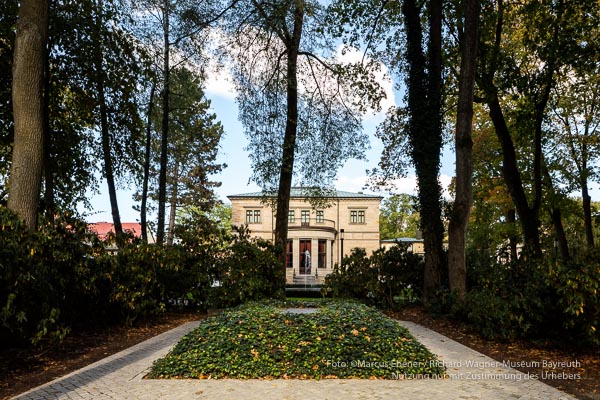
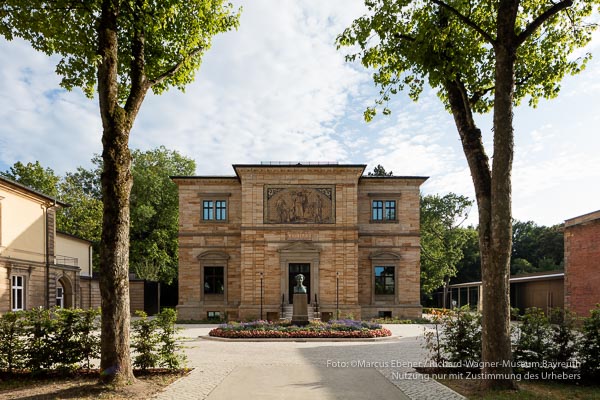
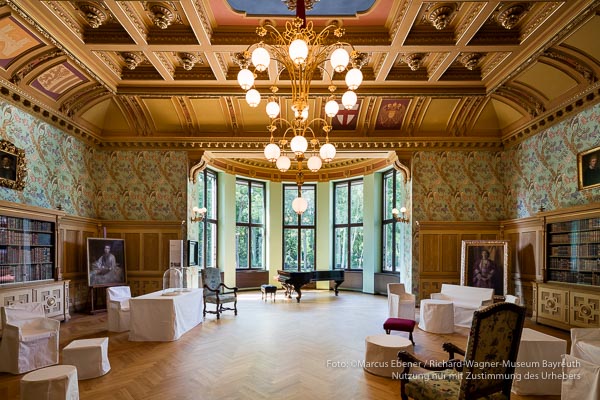
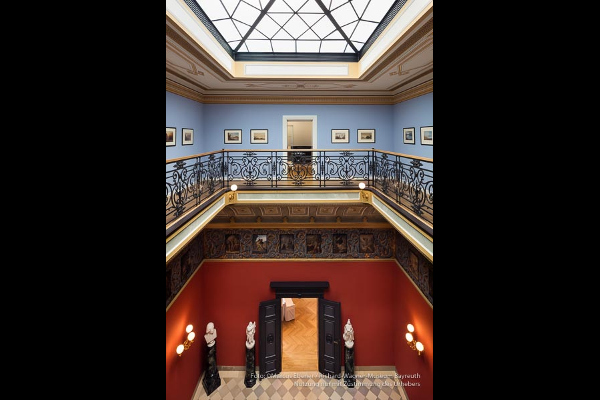
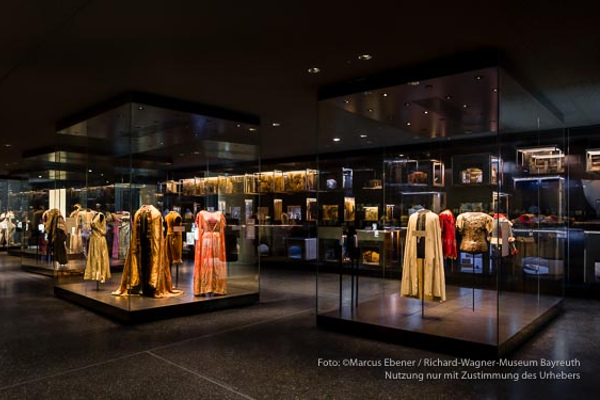
mit Nationalarchiv der Richard-Wagner-Stiftung
Richard-Wagner-Straße 48
95444 Bayreuth
Telefon +49.921.75728-0
Web: www.wagnermuseum.de
E-Mail info@wagnermuseum.de
September bis Juni:
Dienstag - Sonntag 10 - 17 Uhr
Juli und August:
täglich 10 - 18 Uhr
24. und 25. Dezember geschlossen
31. Dezember: 10 - 14 Uhr
1. Januar: 13 - 17 Uhr
Richard Wagner kam 1872 nach Bayreuth. Zwei Jahre später bezog er mit seiner Familie das neuerrichtete Wohnhaus „Wahnfried“. Hier vollendete er am 21. November 1874 mit der Partitur der „Götterdämmerung“ den „Ring des Nibelungen“ und nahm die Arbeit an seinem letzten Werk, dem „Parsifal“, auf. 1883 starb der Komponist in Venedig. Sein Leichnam wurde nach Bayreuth überführt und in der Grabstätte im Garten seines Hauses beigesetzt.
Die Familie Wagner bewohnte das Haus Wahnfried bis zum Tode Wieland Wagners im Jahre 1966, danach schenkte sie das Anwesen der Stadt Bayreuth. Man beschloß, zum hundertjährigen Jubiläum der Bayreuther Festspiele im Jahre 1976 hier ein Museum einzurichten. Von 1974 bis 1976 wurde das Haus Wahnfried im originalgetreuen Zustand wieder aufgebaut und das Richard-Wagner-Museum eröffnet.
Um dem überragenden Werk Richard Wagners ein angemessenes Denkmal zu setzen, ist es das erklärte Ziel der Stadt Bayreuth und der Richard-Wagner-Stiftung, ein zeitgemäßes, informatives und kulturell hochwertiges Museum entstehen zu lassen. Der gemeinsame Auftrag der Vermittlung kulturgeschichtlichen Wissens zur Vergegenwärtigung unserer kulturellen Wurzeln, unserer kulturellen Identität und damit eines verbindenden Gemeinsinns folgt so der stets zukunftsweisenden Forderung Richard Wagners: „Kinder, macht Neues!"
Deutschland verfügt über musikalische Traditionen und Nachlässe von außerordentlichem Wert: Händel, Schütz und Bach, Beethoven, Mendelssohn, Schumann, Brahms und Wagner sind - um nur einige Namen zu nennen - weltweit bekannte und geschätzte Komponisten. Ihr Wirken hat eine einzigartige Musiklandschaft wesentlich mitgeformt.
Zahlreiche Orchester, Chöre und Ensembles, renommierte Musikfestivals und -reihen, Musikerhäuser mit Museen, öffentliche Archive und Bibliotheken, aber auch private Sammlungen bewahren ihr musikalisches Erbe.
Diesen unschätzbaren Fundus gilt es immer wieder neu zu beleben und für die Gegenwart zu erschließen. Den in der Arbeitsgemeinschaft Musikermuseen Deutschlands zuusammengeschlossenen Häusern kommt dabei eine wichtige Rolle zu. In ihnen begegnen wir dem Werk von Musikern und Komponisten, die die Kulturnation Deutschland außerordentlich bereichert haben. Über das individuelle Portrait, über die Vermittlung des einzelnen Œuvres hinaus tragen die Musikermuseen aber auch zur Pflege musikalischer Tradition insgesamt bei. Die vorliegende Broschüre unterstreicht diesen Aspekt der Zusammenschau, und sie lädt zu einer Reise in die Musikgeschichte Deutschlands ein. Ich wünsche diesem Reiseführer regen Gebrauch und eine große Resonanz.
Bernd Neumann, MdB
Staatsminister bei der Bundeskanzlerin
Der Beauftragte der Bundesregierung für Kultur und Medien
Zitat: Vorwort zur Broschüre der Arbeitsgemeinschaft "Musikermuseen in Deutschland", 2007.